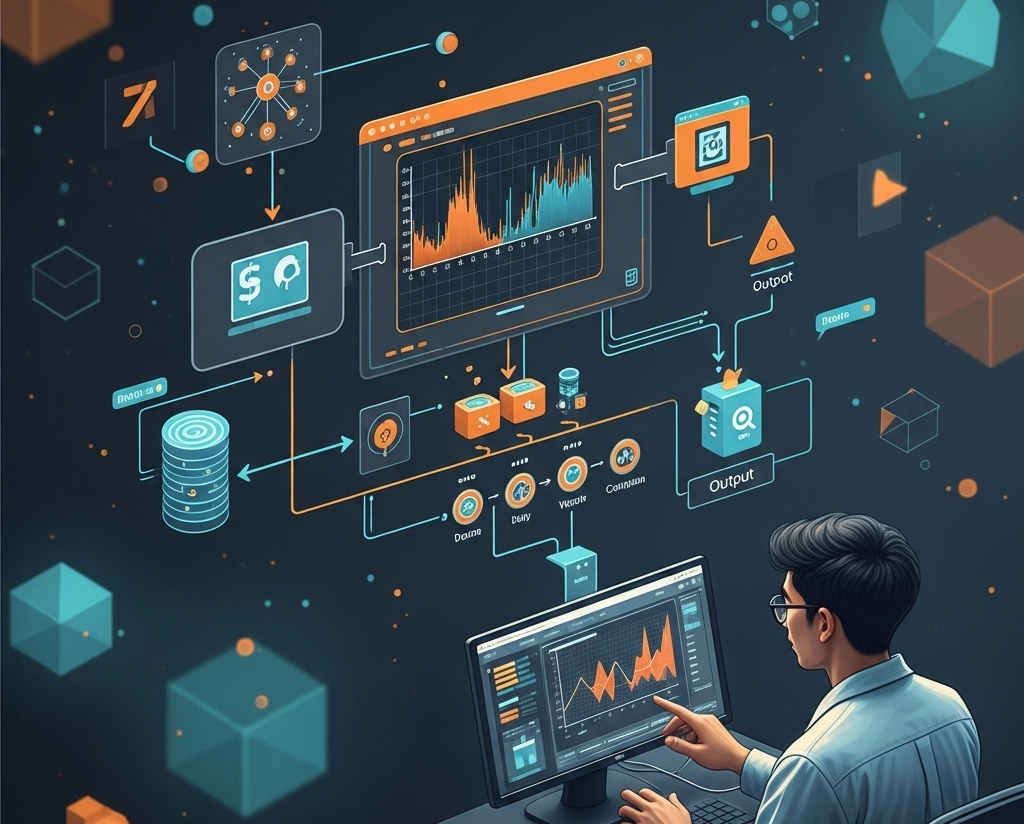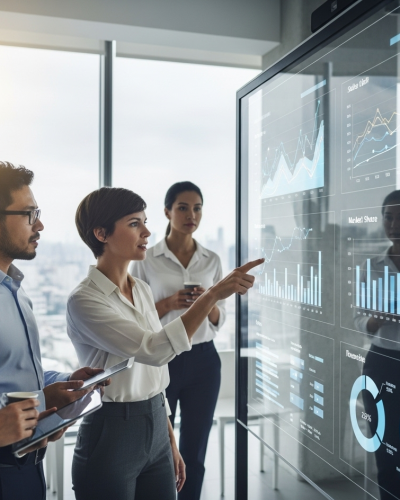Key Technologies Driving Digital Transformation in Procurement and Supply Chain
- August 3, 2025

- Technology
Digital transformation is no longer a buzzword—it’s a necessity for procurement and supply chain professionals aiming to stay competitive. With global disruptions, economic shifts, and sustainability pressures mounting, organizations are leveraging cutting-edge technologies to enhance efficiency, resilience, and decision-making. According to recent surveys and reports, technologies like AI are at the forefront, boosting operational efficiency by up to 40% through automation and predictive insights. This blog post explores the key technologies propelling this transformation, their benefits, and real-world implications for procurement and supply chain management.
1. Artificial Intelligence (AI) and Machine Learning
AI, including Generative AI (GenAI) and predictive models, is revolutionizing procurement and supply chains by automating complex processes and providing actionable insights. AI tools are streamlining everything from demand forecasting and inventory optimization to supplier risk assessment and negotiation strategies.
- Predictive Analytics and Decision-Making: AI analyzes vast datasets to forecast market shifts, supplier performance, and potential disruptions, enabling proactive strategies. For instance, predictive AI can optimize sourcing by identifying cost-saving opportunities in real-time.
- Automation and Efficiency Gains: Machine learning algorithms automate routine tasks like order fulfillment and procurement workflows, reducing human error and freeing up teams for strategic roles. Reports indicate AI can enhance efficiency by analyzing trends and generating simulations for optimized operations.
- GenAI Applications: Tools powered by natural language processing (NLP) and deep learning facilitate conversational AI for supplier interactions and generate recommendations, such as automated communications or scenario planning.
As procurement leaders prioritize GenAI for cost savings and supply continuity, its adoption is expected to define success in volatile markets.
2. Internet of Things (IoT) and Real-Time Analytics
IoT devices are embedding connectivity into every link of the supply chain, providing unprecedented visibility and control. By 2025, IoT is driving resilience through real-time monitoring of assets, shipments, and environmental conditions.
- Enhanced Tracking and Visibility: Sensors on goods and vehicles enable end-to-end traceability, reducing delays and losses. For example, IoT-integrated systems can alert managers to temperature fluctuations in perishable shipments.
- Digital Twins for Simulation: Paired with IoT, digital twin technology creates virtual replicas of physical supply chains, allowing for testing scenarios like disruptions or optimizations without real-world risks.
- Integration with AI: When combined with AI, IoT data fuels advanced analytics, improving inventory management and predictive maintenance to minimize downtime.
This technology is particularly vital for building agile supply chains that adapt to geopolitical risks and demand volatility.
3. Blockchain for Transparency and Security
Blockchain technology is gaining traction for its ability to create immutable, transparent records across supply chains, addressing issues like fraud, counterfeiting, and compliance. In procurement, it ensures verifiable supplier credentials and ethical sourcing.
- Secure Transactions and Traceability: Distributed ledgers track products from origin to delivery, enhancing trust among stakeholders. This is crucial for industries like pharmaceuticals or food, where provenance matters.
- Smart Contracts: Automated, self-executing contracts streamline procurement processes, reducing paperwork and disputes by triggering payments upon verified milestones.
- Risk Mitigation: Blockchain’s decentralized nature bolsters cybersecurity, protecting against data breaches in an era of rising digital threats.
While not as ubiquitous as AI yet, blockchain is a cornerstone for sustainable and resilient supply chains, especially with increasing ESG regulations.
4. Big Data Analytics and Spend Analytics
Big data analytics transforms raw information into strategic intelligence, empowering procurement teams with insights into spending patterns, supplier performance, and market trends. Spend analytics, a subset, is highlighted as a top technology for 2025.
- Cost Optimization: By pinpointing inefficiencies and negotiating better terms, analytics tools help reduce wasteful spending and ensure budget compliance.
- Supplier Management: Data-driven evaluations improve relationships and risk assessments, identifying high-performing vendors and flagging potential issues.
- Integration with Other Tech: When fused with AI and IoT, big data enables neural network-based optimizations, such as inventory replenishment and opportunity identification.
In a data-rich environment, these tools are essential for driving value and supporting organizational goals amid economic pressures.
5. Cloud Computing, Automation, and Sustainability Technologies
Cloud platforms provide the scalable infrastructure for integrating these technologies, while automation tools like Robotic Process Automation (RPA) handle repetitive tasks. Sustainability tech, including ESG tracking, rounds out the transformation by aligning operations with environmental goals.
- Cloud for Collaboration: Enables seamless data sharing across global teams and suppliers, fostering agility in hybrid work models.
- RPA and Robotics: Automates procurement and warehouse operations, from invoice processing to picking and packing, boosting speed and accuracy.
- ESG Integration: Technologies track carbon footprints and supplier sustainability, ensuring compliance and mitigating risks from non-adherence.
These foundational technologies support broader digital ecosystems, making supply chains more efficient and eco-friendly.
Conclusion: Embracing the Future of Procurement and Supply Chain
The convergence of AI, IoT, blockchain, analytics, and cloud technologies is not just enhancing operations—it’s redefining them. Organizations that invest in these tools will achieve greater resilience, cost efficiencies, and innovation, turning challenges into opportunities. For procurement and supply chain leaders, the message is clear: adopt now or risk falling behind.
Table of Contents
- Artificial Intelligence (AI) and Machine Learning
- Internet of Things (IoT) and Real-Time Analytics
- Blockchain for Transparency and Security
- Big Data Analytics and Spend Analytics
- Cloud Computing, Automation, and Sustainability Technologies

